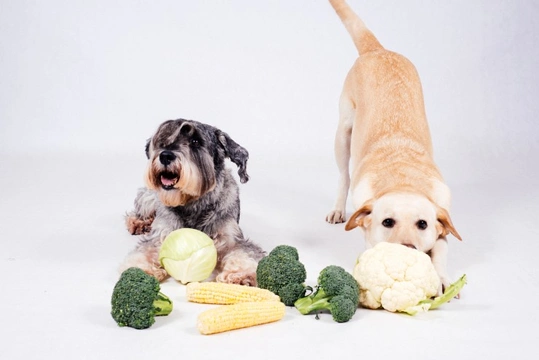
What vegetables shouldn’t you feed to your dog?
Love them or hate them, vegetables are an important part of balanced nutrition for people – and dogs too. Whilst many people mistakenly believe that dogs are carnivores, they are actually omnivores. This means that in nature, they eat both meat and vegetable matter. Dogs, like people, need some veggies in their diet in order to thrive, and if you feed your dog a complete diet then the right quantities of healthy, nutritious veg will be all built in.
Even if you feed your dog a raw food diet, be that one prepared at home or one you buy in ready to feed portions, veg will come into the mix somewhere, and many of us have dogs that love veggies as a snack or a treat. Because vegetables are good for us, it is easy to assume that anything that is safe for humans to eat will also be fine for our dogs, but this is not actually the case.
Whilst the vast majority of vegetables are fine to feed to dogs, some are toxic and may be dangerous, or upset your dog’s stomach, which means of course that they should be avoided.
If you are wondering what vegetables you shouldn’t feed to your dog, wonder no more. In this article we will cover the main types of vegetables that are bad for dogs, and which you shouldn’t let them eat. Read on to learn more.
Rhubarb greens and stalks
Rhubarb is one of the more surprising vegetables that dog owners often don’t know are bad for their pets, but the stalk and leaves of rhubarb plants (the leaves in particular) contain a type of naturally occurring crystals that can interfere with your dog’s natural calcium levels and cause deficiencies.
Whilst this is rare, even in dogs that have eaten rhubarb stalks or leaves, calcium depletion can cause symptoms of toxicity and blood in the urine. In unusual and acute cases, this can ultimately result in renal failure.
Onion
Onions (including other veggies from the onion family like chives and salad onions or spring onions) can be harmful for your dog if they eat a lot of them. Should your dog eat a small quantity of onions or related veggies they are unlikely to suffer any ill effects, but if they eat a lot of them, this can cause damage to your dog’s red blood cells, and make them very sick.
Leeks
Leeks are a close relative of onions, although they contain less of the harmful ingredient that makes onions potentially toxic to dogs. However, to be on the safe side you shouldn’t feed your dog leeks.
Garlic
In a similar vein, garlic is yet another relative from the onion family and is one that is also toxic to dogs. Low, measured quantities of garlic such as you might find in veterinary-approved supplements for your dog are fine and can be beneficial, but garlic that you use to cook with shouldn’t be given to your dog.
Additionally, if you are thinking of feeding or already feed any supplements containing garlic to your dog, double-check with your vet that this is ok just to be on the safe side.
Tomato stems and leaves
Actual tomatoes are fine to feed to your dog in moderation, but make sure that you remove the stalks and leaves and don’t allow your dog to eat these or chew on them. This is because the greenery attached to tomatoes contains a substance called solanine, which if consumed in large enough quantities, can be toxic to your dog and make them quite sick.
Potato greens
Potato is often used as roughage to bulk out dog food, and whilst potatoes don’t contain a huge amount of nutrients for your dog, they are safe to eat. However, the greens on potatoes (the part of the plant that grows above the ground) again contain solanine, just as tomato plants do, and this can be very toxic to dogs.
Beware of hidden dangers
Knowing what vegetables are toxic to dogs makes it easier to know what you shouldn’t be giving to your dog to eat, but you should also pay some mind to table scraps and food that your dog might beg for when you and your family are eating. Even if you prepare all of your meals at home from scratch, it is easy to forget after you’ve cooked and eaten it that you may have put something that your dog shouldn’t eat into it – like garlic in sauces and gravies, and onions or leeks in stews and casseroles.
If you are unsure about something your dog has eaten or if you are concerned that they’ve scavenged something that they shouldn’t have, call your vet for advice on how to proceed. They may ask you to bring your dog in for monitoring if they are concerned, or advise you on how to monitor your dog at home in case of any problems later on.



